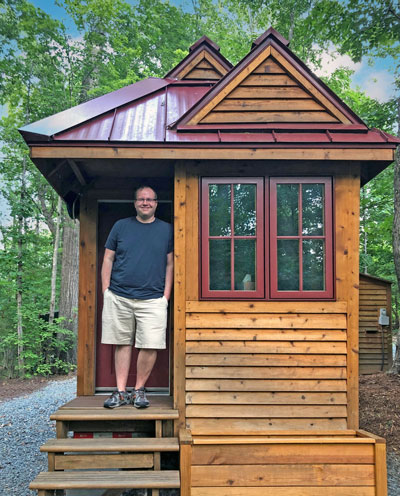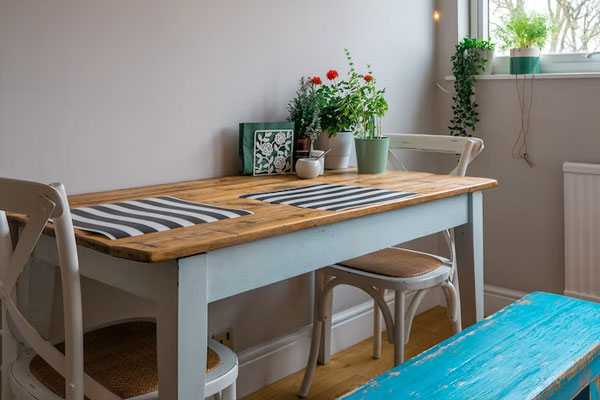
NAVIGATION
It’s never too early or too late to enjoy the benefits of minimalism. In fact, as you transition into different phases of life, the act of decluttering, organizing, and downsizing helps you focus on the moment and what best serves you now. This is especially true for those about to retire. Check out our helpful downsizing tips for seniors to make the most of your golden years.

Hi, I’m Ryan
Although I won’t retire anytime soon, I see the value and importance of thinking ahead. These helpful tips result in smoother transitions when retirement, empty-nesting, and other life changes come along.

How Is Downsizing Different For Seniors?

Overall, this is when you finally get to take a break and focus on other areas of life besides work, raising children, or the daily grind. Downsizing for retirement is a wonderful way to greet and enjoy this milestone to the fullest.

When Should Seniors Start Downsizing?

Ideally, people declutter or downsize regularly as they go through life, but the time for senior or retirement downsizing can vary. Creating routines or habits around organizing your belongings makes any significant life change less of a shock. For example, every year our tastes change, and we outgrow items.
Taking stock of our lives prevents the panic that ensues if we wait until we’re older to get into this mindset. Other benefits of downsizing include increased mindfulness and practicing letting go.
What Should You Factor In To Downsizing For Seniors?
It can be tough to pinpoint every variable as you’re downsizing or making a big life decision, because everyone is different and the future can’t always be predicted. That’s why it’s best to stay flexible to reduce the risk of bumps along the way.
When downsizing, there are other factors to consider as well
Life Circumstances
If you’re moving, do you have or want pets? Will you need public transportation options, or do you own a car? Should you find a place closer to your family? Really think about the life you want and need in order to pick an appropriate home.
Living Arrangements
Who lives with you? How big or small a place will you need? Make sure you consider how much common space or personal space you’ll have, so there aren’t lots of duplicate items or overcrowding.
Measurements and Floorplans
Once you find a new home, factor in all its room and closet space sizes. This will help you determine which belongings, especially bulky items like furniture, can reasonably make the move with you.
Expenses
Consider your upcoming moving costs and find out what you can expect regarding your new home’s typical electricity, utility, and cable bills. Don’t forget about other recurring expenses including groceries, gas, medication.
Budget
Create a reasonable monthly budget and commit to it — try it out for a few weeks before you make any big changes. It’s important to make sure all your needs are covered, but that you’re being smart about your spending.
Medical Needs
If you have specific medical needs, begin shopping around for new doctors wherever you plan to live. Consider any accommodation that will be needed in your new home to make life easier for yourself or your partner as you age.
Tips To Make Downsizing For Seniors Easier

There’s more than one way to downsize and create the best space for you. While everyone’s experience is bound to be different, I can offer a few tips that have been helpful as I’ve helped family members and friends downsize after retirement.
1 Declutter Before Downsizing
One benefit of decluttering before you downsize is getting an idea of what you already have, so you don’t duplicate when shopping. Take stock of what you need and what you can get rid of before the big move.
2 Make A Plan
Write out a plan that includes a timeline and your priorities. For example, if you need to sell your home before you move, arrange the timeline for that to be done first and then go from there.
3 Explore Your New Space
Take pictures of where you live now and where you’re moving to so you can compare the two properties. This helps you understand any space limitations.
4 Prioritize Self-Care
Letting go isn’t easy so take breaks, go slow, and find ways to enjoy this process. You’ll get through it more easily this way.
5 Remember The “One Year Rule”
Put green stickers on what you’d like to keep. If you haven’t used the item in a year, it gets a red sticker for trash or a yellow sticker for donation.
6 Know It’s Okay To Let Go Of Sentimental Items
Downsizing ultimately means letting go of items that no longer serve you. Keep useful, meaningful items rather than clinging to something because it’s a habit you feel powerless to break, or it brings back special memories.
Parting with keepsakes is easier if you do the following
- Take digital pictures
- Donate precious items or heirlooms to loved ones
- Separate the items from the memories
- Celebrate what you keep by placing these items in prominent areas of your home
Give Yourself Permission To Declutter Valuable Items
Begin decluttering with the least valuable items in your home and work from there. Ask yourself honest questions. Can you sell the item? If so, consider starting a rainy day fund, so you can do something fun with the money.

Make Oversized Items First To Go
Chances are, you’re not going to have much space for bulky furniture and other oversized items in your new, smaller space. Make it a priority to narrow down which large items are maing the cut, than say goodbye to the rest.
Consider donating big items to a favorite charity, thrift shop, or special cause. This includes exercise equipment, furniture, lawn equipment, or vehicles — many charities even send out movers to take them away for you. Donating when downsizing feels good — you’re helping others and keeping things out of the landfill.
Who Can Help Me Downsize As A Senior?

Most seniors find downsizing really difficult to do on their own. Even if you have a small or medium-sized home, downsizing is a big job. You’re sorting through a lifetime of possessions, deciding what to keep, and then removing the rest. It’s best to do this with some help.
Family
Encourage loved ones to put labeled post-its on what they’d like when you’re ready to give things away. You can also tell old family stories about some of the sentimental items to make the day extra special.

Neighbors
Encourage your neighbors to downsize and declutter along with you. Ask younger kids to host a lemonade stand while teenagers earn a few bucks moving items for older neighbors. Every household can chip in to pay for movers or junk removal companies.
Downsizing Consultants
Professional organizers often work with therapists, social workers, charities, and other companies to do this for you. They may cost a bit, but if your budget allows for this expense, it can be well worth it. They might also include a designer to help you maximize either the space you’re in or the space you’re going to for this next chapter.
Moving Professionals
Get at least three quotes from movers in your area to determine moving costs. Ask about all charges including packing and boxing up your belongings. Don’t forget to ask for multiple references and get a written estimate of the charges.
How To Mentally Prepare For Downsizing As A Senior

Parting with precious items or throwing things away isn’t easy. Here are a few words of advice to consider as you’re mentally preparing for downsizing.
Don’t Judge Yourself Or Your Feelings
It’s also natural to wonder if you have too much or are being wasteful. Combat this by doing the “opposite” of wasteful. Grab a recycling bin or call your favorite charities and find a way to donate to a cause that’s important to you.

Surround Yourself With Support
Talk with a therapist or loved one about downsizing depression. Explore your thoughts and feelings. Spend time with loved ones who show compassion and empathy.
Take It Slow
Downsize one room at a time at first to see how it feels, and then go from there. Downsizing too much too soon might feel overwhelming.
Senior Living: How To Organize Your New Space

If you plan on moving into a smaller space after retirement, here’s how to ensure a smoother transition.
 First, think about your organizational strategy. Plan out everything you’re bringing with you and where you will keep the items. Before the big move, go from room to room and write down the new dimensions, including pantries and closets. Also, consider what you want to put on the walls.
First, think about your organizational strategy. Plan out everything you’re bringing with you and where you will keep the items. Before the big move, go from room to room and write down the new dimensions, including pantries and closets. Also, consider what you want to put on the walls.
Identify creative ways to store your belongings. This includes storage boxes, space underneath beds, or hooks behind doors, shelves, and wall-mounted baskets.
Finally, when you make your way into your new home, commit to keeping your space tidy and organized with regular decluttering. Do this once a year, like at the beginning of spring, or quarterly, depending on your situation. This will make it easier to clean and enjoy your new, cozy home.
Your Turn!
- Where do you want to live during your retirement years?
- What room will you start decluttering or downsizing first?








Leave a Reply